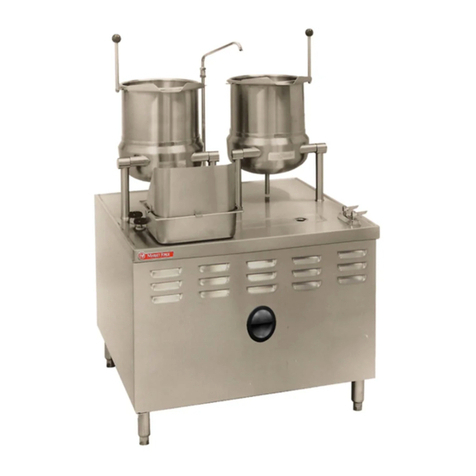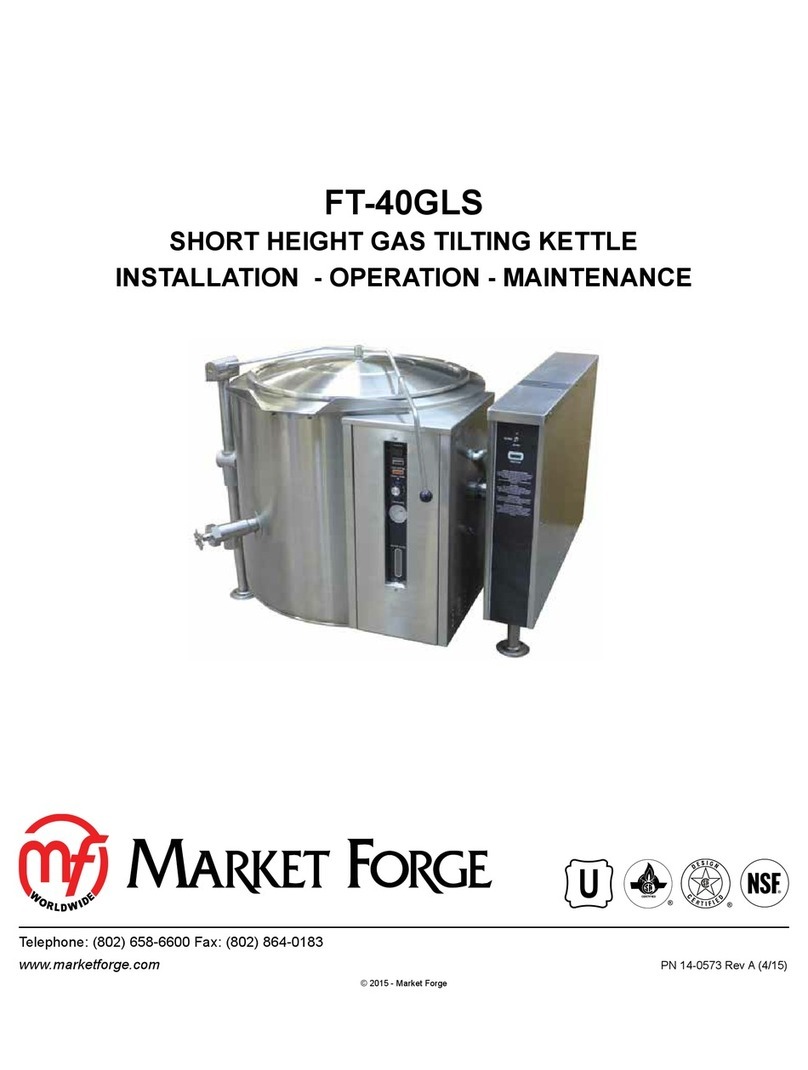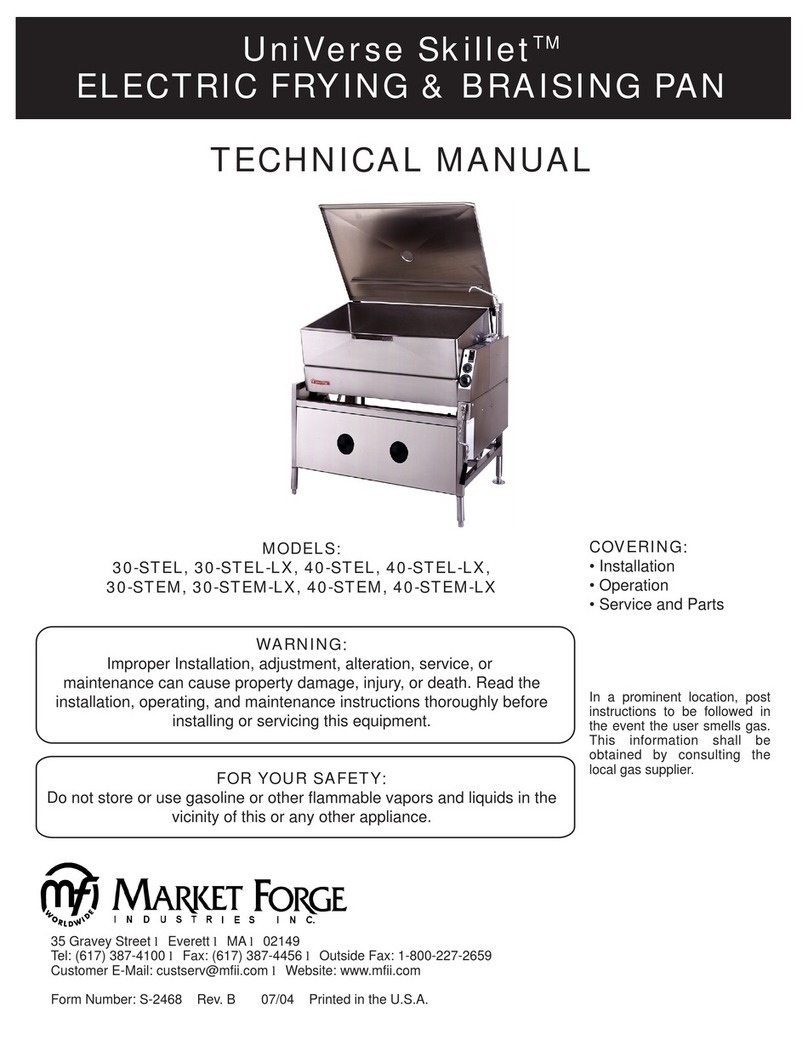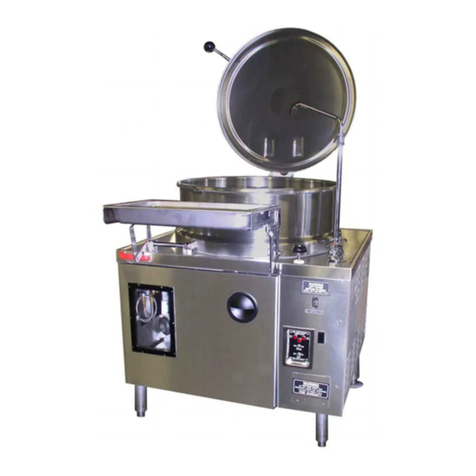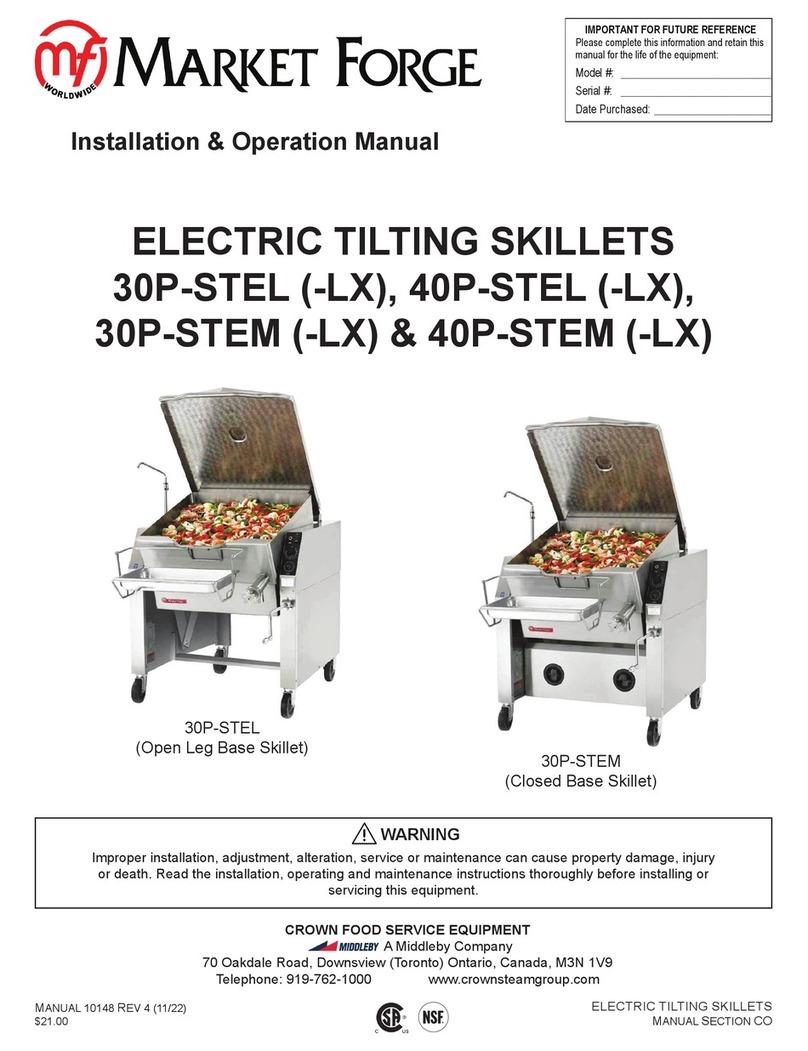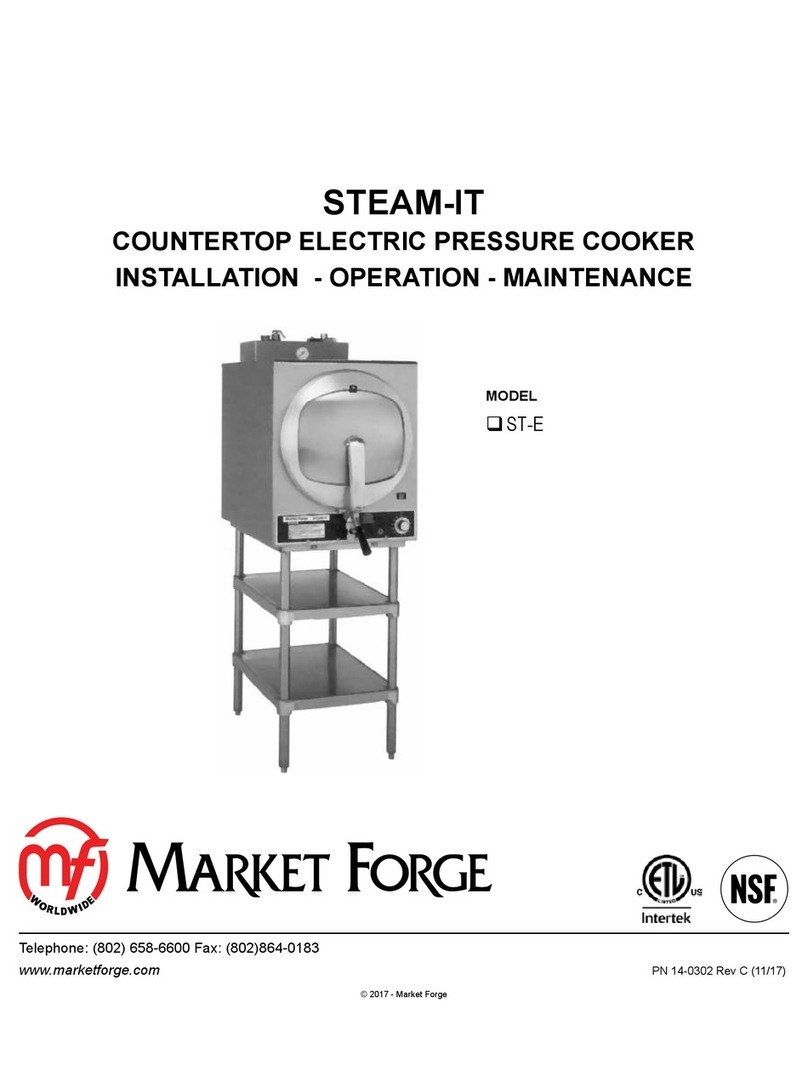
SEPTEMBER 19, 2014 5 FTM-L SERIES DIRECT STEAM MIXER KETTLES
MAINTENANCE & REPAIR
SUGGESTIONS:
4. Set up a lter maintenance schedule and follow it dili-
gently.
5. Inspect lter elements that have been removed from
the system for signs of failure which may indicate that
the service interval should be shortened and of im-
pending system problems.
6. Do not return to the system any uid which has leaked
out.
7. Always keep the supply of fresh uid covered tightly.
8. Use clean containers, hoses and funnels when lling
the reservoir. Use of a lter cart when adding oil is
highly recommended.
9. Use common sense precautions to prevent entry of
dirt into components that have been temporarily re-
moved from the circuit.
10. Make sure that all clean-out holes, ller caps and
breather cap lters on the reservoir are properly fas-
tened.
11. Do not run the system unless all normally provided
ltration devices are in place.
12. Make certain that the uid used in the system is of a
type recommended by the manufactures of the sys-
tem or components.
13. Before changing from one type of uid to another (pe-
troleum base oil to a re resistant uid) consult com-
ponent and lter manufacturers in selection of uid
and the lters that should be used, Also consult the
publication “Recommended Practice fro the use of
Fire Resistant Fluids for Fluid power Systems” pub-
lished by the National Fluid Power Associatetion.
PREVENTIVE MEASURES:
How to keep your equipment’s hydraulic system from run-
ning too hot.
1. Set up regular schedule for checking the oil tempera-
ture, appearance, smell and feel. Change oil as rec-
ommended by the equipment manufacturer.
2. Be prompt about removing, checking and repairing
or replacing valves, pumps or other components that
are running hot.
3. If relief or ow-control valves are running hot, check
and adjust their settings. Follow your equipment own-
er’s manual.
4. Break in new components gradually. New, close-t-
ting parts expand at different rates and are especially
prone to seize when they get too hot.
5. Start a cold pump or motor on hot oil by jogging
just enough to draw the hot oil into the component.
Then wait a few minutes to allow the temperatures
to equalize in all the pumps parts. Repeat until the
temperature on the outside of the pump ios the same
as that on the piping.
6. Keep your equipment clean. A thick layer of dirt acts
as insulation. It will prevent the hydraulic system from
extracting heat.
7. On hot days and in hot climates check and change
the oil more frequently. Be sure to use an oil recom-
mended for hot weather operation by the equipment
manufacturer or oil supplier.
MAINTAINING PROPER OIL TEMPERATURE:
Hot oil in you equipment’s hydraulic system is out of the
primary causes of poor operation, component failure and
down time. Here are come pointers on maintaining proper
oil temperature.
The oil in you hydraulic system was designed for opera-
tion within a specied temperature range. You may be
able to run it at hotter temperatures for short periods of
time, intermittently, without bad effects. If you run continu-
ously with oil that’s too hot, your equipment will operate
poorly and eventually key components will fail and halt
your unit.
When is hot too hot?
“Hot oil” os a relative term. In most cases, 120OF, at the
reservoir is considered an ideal operating temperature.
Always take an oil temperature reading at the reservoir,
not at a component or any of the piping.
Oil that has been running too hot will look darker and feel
thinner than new oil. It will also smell burnt. Chance are
it will contain more contaminants, because hot oil lead to
accelerated wear of component parts.
Measuring oil temperature
A thermometer is mounted on the reservoir. Make it a
habit to check the thermometer periodically, after the unit
had been running for more then an hour.

